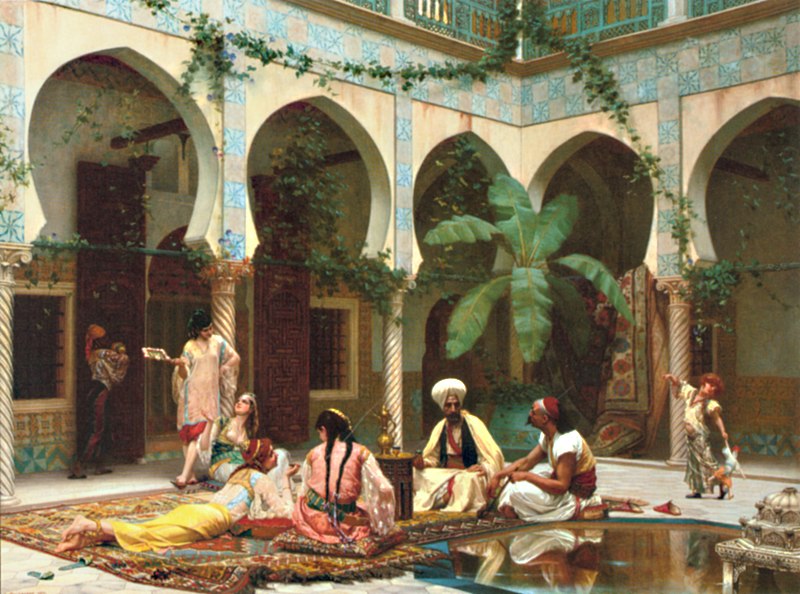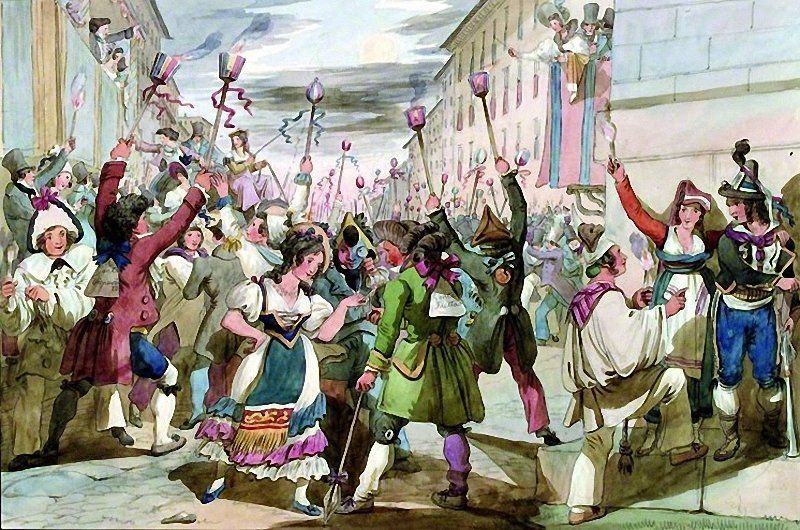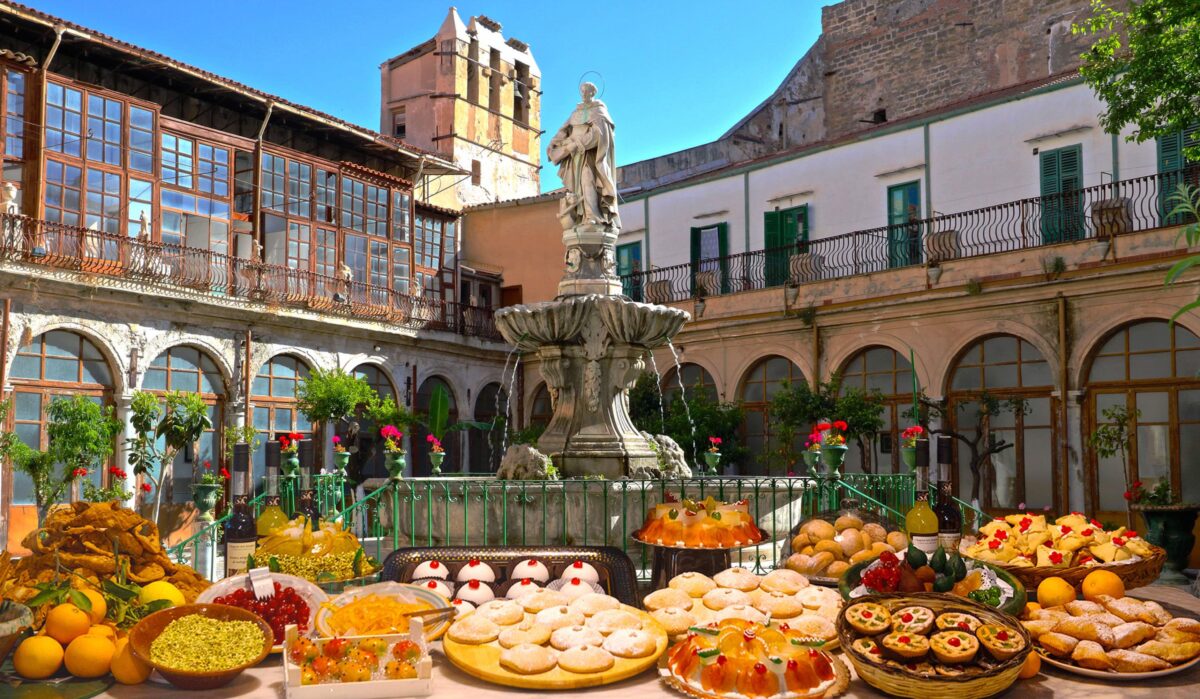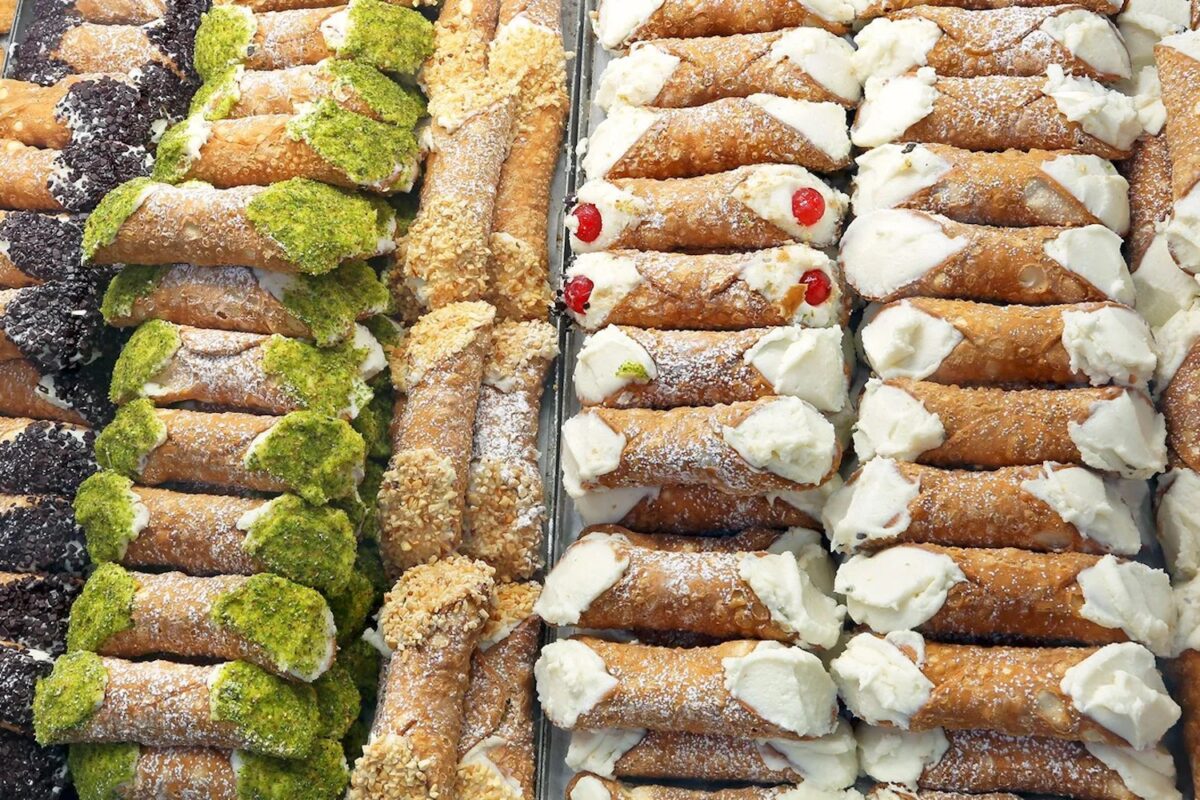In Sicily, cannoli are a cultural icon, featured on the island’s official website and, more importantly, referenced in Francis Ford Coppola’s legendary movie The Godfather with the immortal line, “Leave the gun, take the cannoli.” But despite their popularity, few know the erotic origins of this pastry and a slew of other Italian desserts…
Italy boasts a delectable array of desserts, each with its own unique charm. If you’re already a fan of Italian sweets, then the humble cannolo needs no introduction. This fried, tubular pastry shell filled with luscious ricotta cheese is a beloved Sicilian treat that can be found in virtually every pasticceria and cafe on the island.
What many people don’t realise is that this dessert, like so many others in Italy, has a fascinating, scandalous and risqué origin story…
So, if you’ve ever looked at an especially girthy connolo, brimming with soft, sweet cream and thought it a looked a bit… sus, it turns out you’re absolutely right. Here, we take a deep dive into cannoli’s long, complicated, and carnal history.
The Erotic History of Italian Desserts
Legend has it that just over a thousand years ago, while the Sicilian city of Caltanissetta was under Arab rule, a group of women working in a harem created the cannolo to honour their emir’s virility.
This fried pastry shell made of flour, sugar, and butter, filled with creamy ricotta cheese, was said to resemble a “phallus”. Though there are no written records to confirm this tale, erotic pastries had been around for many centuries prior, and have stuck around for many centuries since…

For example, in Ancient Greece – where sexual organs were revered as symbols of abundance – citizens consumed honey and sesame cakes in the shape of breasts during the Thesmophoria festivities to honour the goddesses Persephone and Demeter.
This practice, thought to have originated in Ancient Egyptian rites, later spread to the rest of the Mediterranean and pre-Roman Sicily.
The Norman conquerors converted Sicily to Catholicism in the 11th century, whereupon ancient traditions mixed with their newly introduced Catholic traditions. The age-old desserts were preserved by nuns, who made the confections for festivals and religious holidays.
Many other age-old Italian desserts with supposedly erotic shapes have been passed down through the ages, including cassata, Minne Di Sant’Agata, and Feddi ru Cancillieri – we’ll leave you to look them up and connect the dots…
Catholic Europe became famously moralistic and punished salacious habits fiercely… Apart from one very special time of year: Carnival, a pre-Lenten celebration where societal rules were thrown out the window for a couple of weeks a year.
The festival was rooted in an ancient festival honouring Bacchus, the Roman god of wine and ecstasy… Not the kind that comes in a pill, just to be clear.

According to Dario Mangano, a semiologist at Università degli Studi di Palermo, rules sometimes needed to be overturned in order to be reaffirmed, and Carnival allowed for just that: it was the only time of year when Catholic prudery would make way for shameless excess and uninhibited self-expression, making it the perfect time to eat cannoli.
Saving the Tradition
Since most convents that housed the traditional recipes for cannoli have since closed down, only a handful of older nuns still know how to make them in the old-school way.
Maria Oliveri, an expert in cultural heritage studies from Palermo, opened a new pastry shop in 2017 inside the Monastero di Santa Caterina in Palermo called I segreti del chiostro.
Oliveri makes sweets from recipes she found through archival research and aristocratic families that acquired them from Sicilian convents.
Unlike most shops that use industrially produced cannoli shells, Oliveri makes her own from scratch, preparing the dough, cutting it into circles, and wrapping it around tubular mould before frying it. They make a whopping 900 cannoli every single day…

Authentic or Cutting-Edge Cannoli?
Although cannoli are now ubiquitous across Italy, the best and most “authentic” ones can arguably only be found in a few Sicilian cafes such as Caffè Sicilia in Noto, Euro Bar in Dattilo, and some places in the commune of Piana degli Albanesi.
Many cannoli you’ll come across these days have undergone quite a transformation in terms of flavour and ingredients. While traditionalists like Oliveri are sticking to their guns, the cannoli scene has been influenced by various cultural and technological advancements, resulting in an array of innovative variations.
Take New York’s Little Italy or Boston’s North End, for example, where multi-flavoured cannoli are the norm. If you’re feeling really adventurous, you might want to try the Swedish version that’s made with maple and bacon… you heard that correctly.
From erotic origins to modern-day innovations, the cannolo has certainly come a long way. Whether you prefer things traditional or cutting-edge, one thing is for sure: it’s a pastry worth indulging in… just don’t go making eye contact with your more immature mates as you feel it melting on your tongue.
